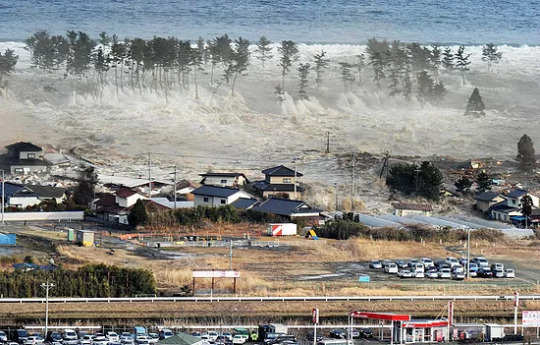#this is of course compensated by living in a country with no legal access to abortion and rampant government homophobia
Text
i never see anyone talk about how cheap it is to live in Eastern Europe like. provided you aren't paying rent (and where i am, less than 10% of the population rent, the rest either have their own place or live in community housing such as student dorms or social housing), you can live pretty well on a minimum wage!
me and my bf spent half a year living off of 400$ a month, which is actually below minimum wage though not by much. we don't pay rent so this money mostly goes to food, transport, meds, and nice things. we had to do a fair bit of budgeting but it really wasn't that hard. we spend less than 200$ a month on all supermarket trips and despite insane inflation this year, i am consistently surprised about how much food you can buy with the equivalent of 20$... like, we need two people (2 full shopping bags plus my backpack) to carry 20$ worth of food every supermarket trip. a bus ticket for an hour is less than a dollar. train ticket to a different city is like 10 bucks for me (with a student discount). i used to go to therapy every week to a very good specialist and she charged less than 30$ an hour
this is why i am so obsessed with making YouTube or writing into an income source like. i could happily and easily live off of a 100 of five dollar patrons. a very modest book advance of 5k dollars would feed me and another person for a year... yeah
#this is of course compensated by living in a country with no legal access to abortion and rampant government homophobia#the ruling party is weird af because they are economically very left but socially pretty right leaning#so we have huge spending on social security medicine education etc#a lot of government support for people especially for kids and elderly#but also christian fundamentalism shoved down everyone's throats#but yeah so many things are free and basics are so cheap#rent is insane tho#me and bf live in a tiny 8 square meter house that my parents own#my parents rent their place and rent plus utilities is more than me and bf spend a month on everything#also heating is getting much more expensive so yeah#still it would be so easy to live off of an income that is like half the poverty line in the US#i really wanna make it in science and financially im covered for the next five years because of two stipends#but it would be really nice to have sci com or writing as a backup plan...#random
4 notes
·
View notes
Text
BEIJING — For Qi Jia, an office worker and blogger in China, the decision to divorce her husband was not one she took lightly.
"He became so sloppy and had an addiction to gaming," Qi, 39, who lives in the eastern city of Changzhou, said. "I took care of our child by myself."
The couple lived apart, due to work, for 13 years and had little communication, she wrote in a personal testimony posted on the Chinese social media site, Douban.
But a recently introduced law, which gives couples a 30-day "cooling off" period to reconsider their decision to untie the knot, finally compelled her to act. Just three days before the law took effect at the start of this year, Qi divorced her husband.
Download the NBC News app for breaking news and politics
Like many other countries, China's divorce rate has steadily increased in recent years.
The new law is meant to urge couples to reconsider hasty divorces, but the legislation has instead only generated frustration among women who fear that seeking a divorce has now become more difficult.
Such was the rush to beat the new restriction that more than 1 million couples requested a divorce in the last three months of 2020, before the cool off-period came into effect — a 13 percent increase on the same period in 2019 — according to data from the Civil Affairs Bureau.
The feminist writer Xiao Meili called the law a "step backwards" for women and said it limited their rights to freely seek separation from a spouse.
"Marriage needs agreement from both people," Xiao told NBC News. "Divorce should be permitted if one person wants it."
Often that person is a woman.
Around 74 percent of first hearings in divorce cases in 2016 and 2017 were filed by women, according to a report by China's Supreme People's Court.
Other barriers to divorce include a gender income gap, rules on property division that tend to favor men and traditional perceptions of gender roles.
In February, a Beijing court created national shockwaves when it ruled that a woman should receive financial compensation — around $7,000 — for housework carried out during the course of her five-year marriage. The case stirred up a huge public debate about the status of women in society.
Better access to education and jobs in recent decades has improved the financial independence and social status of women in China, who as a result seemingly have less tolerance for unhappy marriages.
However, social pressure is still present — family and friends often discourage women from divorcing and Chinese courts tend to rule against divorce in the first instance, in order to maintain social stability. Divorce still leaves a trace of social stigma for many women.
Sometimes, even evidence of suffering and domestic abuse does not guarantee a divorce will be granted.
In one prominent 2019 case, a woman named only as Ms. Liu, from China's central Henan province, was shown on security camera video being violently assaulted by her husband. Yet the court did not rule in her favor when she filed for divorce in 2020. Liu posted the video online, sparking a debate on social media that pressured the court to grant her divorce.
China's Civil Affairs Bureau has made clear the new cool-off period would not apply to divorce lawsuits that involve domestic violence. But divorce through the courts is nonetheless often prolonged and unfruitful for many women.
Ma Danyang, a divorce lawyer based in Beijing, said the new cool-off period had only increased the anxiety among her clients.
"Couples finally come to an agreement but then they start to worry the spouse might change their mind during the 30-days," Ma said.
"It's quite unfair to women. ... Each day in this waiting period feels like years to them."
But for professor He Xin, an expert in China's legal system at Hong Kong University, the introduction of the divorce cool-off period is reasonable, as divorce is such a big decision. "Many countries already have similar laws," he added.
In China, the rising divorce rate is compounded by declining marriage and birth rates, prompting a demographic crisis as the country's population ages — a big challenge for the government in Beijing, which has ramped up efforts to advocate traditional family values in recent years.
The one-child policy, which was in place for decades, was abandoned in 2015, but this change alone has not been able to stem the crisis in the world's most populous country.
Some think the new divorce rules could discourage couples from tying the knot in the first place.
"Young women now have more awareness of gender equality," Xiao said. Adding, "many single women can still have a decent life by themselves."
All dragging out divorce proceedings because the courts want to “preserve the family bs” does is make women being killed more likely.
127 notes
·
View notes
Text
About Wonho’s strange half-removal from Starship

I’ve seen so many people talk about how Wonho still hasn’t been entirely removed from Starship’s records (he’s still in fancafe, he’s still listed as a member in the website) and how there has been no official announcement aside from the one in Naver, and how strange that is, and I decided to write a post about it as well, just to have my thoughts sorted out. After thinking it for a while I now have two major reasons as possible explanations.
1) One is obviously that they have no fucking clue what to do because all alternatives are bad, they made a stupid decision in the first place and right now they’re buying time, trying to understand the scale of this protest we’re having. I am guessing everyone inside and outside of the company itself, including regular Koreans, understand that this is not a big crime and that we’re punishing an actual role model for having a relatively normal teenager past he actively tried to grow and learn from. But Starship simply followed their own rules, aka. Wonho probably violated the terms in his own job contract by causing a police investigation for whatever reason and therefore, had to be fired. So most likely Starship thought they were acting like a sincere company and that fans would accept the outcome because that’s how laws and idol contracts work. Probably they were panicking, too, a little bit, considering they were already under attack because of the pdx101 situation and couldn’t afford to have another blow to their reputation.
It’s just that when they literally tripped over their own feet to rush to defend their reputation, they failed to realize that a) Wonho has not been convicted and that they with 100% certainty cannot find enough evidence to convict him at any point, b) The “crimes” he allegedly did are not only done ages ago, but they’re also not serious and did not cause any real harm to anyone, c) the people filing the police report are convicted criminals, have already lied about other things and planned and executed this entire accusation to hurt not just Wonho but also Shownu and their entire group, d) Wonho is very, very popular in countries in which their own law enforcement would laugh their asses off should someone try and file a police report about something that meaningless AND e) now that Starship has so many ties to so many of these other countries and has attempted to build Monsta X’s entire career around these successful world tours, they cannot back off from anything without it having consequences to their image in these countries. Aka. they trapped themselves and no matter what they decide to do at this point, they will lose their face, either in front of the global audience or Korean audience.
So, if they now permanently remove everything about Wonho in their own records and websites, fans will lose their hope and might turn away from Starship for good, especially dedicated Wonho stans that there were quite many of. If they don’t remove the traces, the hope lingers and people might keep supporting the rest of the members but they will also keep protesting and pressuring Starship. Also if they do give us clear signs that there’s hope and then just sit and wait to see how the police investigation goes, something even worse about Wonho’s background might come up (obviously I don’t believe in that but Starship might not want to take that risk).
2) But then there’s the other option that has something to do with this specific comeback and the fact that while they’re promoting it, they are using Wonho’s face in the music video, his voice in all of the album tracks and moreover, his lyrics and composed materials in the song Mirror. They also made those relay and halloween version dance shows and the comeback live and Weekly Idol shows that are part of the promotional material, and Wonho is in them, too.
Now this is me just speculating and theorizing but if they had indeed cut all ties to Wonho 100%, could they legally even use those album materials to promote? Could he, in theory, sue them for using his face, voice and artwork to gain album revenue, when he isn’t getting anything out of it? Aka. Is he still somewhat a member of the group, just so Starship avoids legal problems while promoting? This would mean that they cannot remove his face from the website as long as the promotions are still going on, because he is getting financial compensation for his contribution. Monsta X indeed won at least one music show, too, and it’s not like Wonho wasn’t a crucial part of that, originally. If they had fired Wonho, let’s say three weeks to a month before the comeback, would Monsta X have even won? So clearly he should be getting some benefits from being a contributor to the album and being present in the first three days of the comeback. Maybe having an access to the fancafe is also just one of those things Starship allows him to have as a part of this specific temporary deal they have with him.
_
My guess is then that Starship is now buying themselves some time, waiting it out and prioritizing the comeback over everything else, trying to squeeze the last penny out of the remaining members, and then they’ll do whatever needs to be done about Wonho. I don’t really believe they’ll take Wonho back before the police investigation is done at least, which might take months.
Having said that, I do want to emphasize that I am not well educated about Korean copyright laws and that this is just me trying to rationalize Starship’s behavior. If someone else knows a little bit more about how this copyright / financial compensation issue should go in legal terms, please respond to this post, because I think everyone would find that information really interesting and useful.
Nonetheless, I do think it matters that we will keep pressuring them and don’t give up on Wonho, because it doesn’t only give hope to Wonho himself and the rest of the members, it also brings up important conversations about idols’ treatment, cyberbullying, knetz bullshit, South Korean legislative system that still hasn’t been updated after Park fucking Chung Hee, and of course the kpop company policies themselves. The Starship cannot get out of this that easily. We have to keep them accountable. We have to keep fighting. Wonho might still come back. Monsta X might power walk out of their own company with their most loyal staff members and establish a new one. Anything can happen and that includes really, really good things.
157 notes
·
View notes
Text
From The Bubonic Plague To COVID-19: Impact On The Legal Profession In India
https://www.barandbench.com/author/rusy-kohli
The COVID-19 Pandemic has fundamentally disrupted our social and economic order. It has affected the functioning of most institutions and the Indian Judiciary is no exception. The Guardian of Law now finds itself compelled to guard against this deadly virus, its fraternity and litigants alike. The declaration of lockdown in India was accompanied with Courts across the country restricting functioning to limited matters in order to curb the number of lawyers / litigants entering court complexes. Soon, all hearings were being conducted through videoconferencing only, in order to avoid any human contact whatsoever. However, just like previous health emergencies in India like the Bubonic Plague of the late 19th century and the Spanish Flu of 1918, Corona Virus has made many its victims including the Judiciary, and the legal profession. In order to fully appreciate the impact of the virus, the author attempts to provide an account of the effect of Covid-19 with reference to historical health emergencies and their impact on the judicial apparatus.
Pendency in Indian Courts:
The Indian Judiciary has been over-burdened for several years and COVID-19 is only adding to this menace. As of May 27, 2020, there are approximately 3.24 crore pending cases in India’s subordinate courts[i] and about 48.2 lakh pending cases in the High Courts[ii].
The Supreme Court via its Notification dated March 13, 2020 restricted functioning of the Court to “ urgent matters ” only ( w.e.f. March 16, 2020 )[iii], thereby only entertaining bail matters, suspension of sentence matters and the like.
High Courts too have restricted their functioning to urgent matters. In normal course, a High Court hears north of 400 matters a day. However, since late March, High Courts across the country are hearing anywhere between 10-100 matters a day.[iv]
Subordinate courts account for over 80 % of the pendency of cases. On April 30, 2020 the Karnataka High Court extended the closure of all District Courts, Family Courts, Labour Courts and Industrial Tribunals in the State until May 16, 2020[v]. On April 29, 2020 the Punjab & Haryana High Court ordered that all the district and sub-divisional Courts in Punjab, Haryana and Chandigarh will function “restrictively” from May 1 “till the lockdown / curfew is in force in the respective area”[vi]. These restrictive measures have led to a glut of pending cases, thereby increasing the burden on courts.
Justice Delayed Is Justice Denied:
Pendency in India’s courts has always been a hindrance in securing timely justice for people, if not denying justice altogether. As the usual functioning of courts has been disrupted, many under-trials and even many of those whose appeals are pending are left with no recourse. It can hardly be denied that the subject adage has particular force in the criminal sphere.
In pursuance of the Apex Court’s directions dated March 23, 2020, States and Union Territories have been asked to constitute High Powered Committees “ to determine which class of prisoners can be released on parole or an interim bail for such period as may be thought appropriate. ” Therefore, each State is free to determine its own criteria for granting bail. Further the Supreme Court has clarified vide its order dated April 13, 2020 that it has not directed the States / Union Territories “ to compulsorily release the prisoners from their respective prisons.”[vii] This clarification has allowed High Courts to further restrict the nature of cases in which they are prepared to grant bail.
On March 29, 2020, the Insolvency And Bankruptcy Board Of India announced the insertion of regulation “ 40 C ”, which laid down that the period of lockdown imposed in the wake of COVID19 shall not be counted for the purposes of the time-line for any activity that could not be completed due to such lockdown, in relation to the corporate insolvency resolution process ( CIRP )[viii]. While this move has come as a relief for companies undergoing the CIRP, it has left creditors waiting for repayment of dues for longer than the mandated 330-day period. NCLT benches across the country are hearing only urgent matters until the lockdown is lifted. This has left many other matters, which do not qualify as urgent, pending. [ix]
Plight Of Advocates:
A PIL was filed in the Supreme Court urging that non-payment of rent for professional premises belonging to advocates should not be made a ground for eviction, during lockdown. However, on April 30, 2020 the Apex Court refused to entertain the plea remarking that it was "not going to enter into this issue," and dismissed the petition as withdrawn. [x] Further on May 8, 2020 a three- Judge bench of the Supreme Court dismissed a plea urging the court to direct the government to formulate a uniform welfare scheme for lawyers affected across the country.[xi]
Daily appearances in court are the main source of income for most advocates, and cash flow has come to a drip, if not completely dried up. In the month of April, 82,725 cases were filed in India’s courts as compared to 8,80,000 cases in March [xii]. This steep decline in cases filed has consequently resulted in a significant dip in court fee, besides Lawyers’ income.
Younger lawyers are left with little or no work. Today, a senior lawyer has the time, and the need to address minor matters, if any, personally, rather than refer them to a junior, which may have been done prior to the lockdown.
A petition was filed in the Madras High Court, seeking a direction to the State and the Bar Council to release Rs. 50,000/- to advocates, in order to compensate for the loss of work[xiii]. However, the Bar Council Of Tamil Nadu & Puducherry has resolved to disburse only Rs. 4000/- each to needy lawyers. The Bar Council was not in a position to release any more money because of limited resources.[xiv]
Law Firms:
Law Firms have also been severely affected. Many partners have either chosen to renounce salaries this financial year or agreed to take significant pay cuts. Firms which charged clients anywhere between Rs. 20,000 and Rs 75, 000 per hour, our now renegotiating their fee, since cash-strapped clients are no longer willing to pay exorbitant sums. Moreover, clients are questioning the actual amount of time that firms are spending on their matters, thereby making firms consider implementing technology that would track the number of hours spent by an executive on a client’s job, in order to provide proof to clients[xv]. This is great innovation; however, it comes with a significant cost in a day and age when law firms are suffering unprecedented lows in business.
Prisoners:
Corona Virus cases have already sprung up in various jails across India. Amongst other jails, there are over 180 cases in Mumbai’s Arthur Road Jail[xvi]. Authorities have been compelled to take drastic measures such as - release a large number of inmates, shift inmates to different prisons and designate temporary places as jails for keeping new undertrials.
By end February, nearly the cases (233 of 565) of COVID-19 reported in Wuhan, China, were from the city’s prison system.[xvii] This fact is reflective of just how dangerous prisons are today.
Indian prisons have historically been overcrowded and may potentially become breeding grounds when threatened by a contagion like Covid19. Considering the difficult living conditions and lack of hygiene, which is an unfortunate reality of our prisons, containing the spread would become nearly impossible.
Coping With This Challenge:
We are now in the age of what has come to be known as “Virtual Courts ” which function through videoconferencing, e-filing, telephonic mentioning of urgent matters and online payment of court fees. These are not bereft of teething problems. Perhaps, the biggest drawback of this new system is the inability to provide public access to courtroom proceedings. Virtual proceedings are being held in camera, and are therefore not open to public which is discordant with what has been held in Naresh Shridhar Mirajkar v State of Maharashtra[xviii], where the Apex Court observed that the public has a right to be present in court and to watch proceedings.
Lawyers are facing problems with basics such as uploading petitions on the Supreme Court website, since the data restrictions put in place are just 5 MB for a petition and 2 MB for additional documents, thereby compelling lawyers to break up the file into multiple volumes.[xix]
Déjà Vu
Historically, the Bubonic Plague of the late 19th century and Spanish Flu of 1918 are two points of reference when the entire framework of judiciary was disrupted on account of a health emergency.
The arrival of the Bubonic Plague in Bombay ( now Mumbai ) in 1896, brought courts to a grinding halt. A J C Mistry, a managing clerk at the Bombay law firm, Wadia Ghandy & Co. has given a grim account of the situation in early 1897. Mistry noted that the judges of the Bombay High Court “had no work to do.” The staff of the firm returned to work after four months, however over the next decade three members fell victim to the plague and died.
Mahatma Gandhi on page 72 in his book - The Law and The Lawyers[xx], while discussing an appeal which was to be heard in Veraval in Gujarat, writes that there were as many as fifty cases heard daily ( a lot of cases for that day and age ) in the Court at Veraval which had a population of about 5,500 people, however at the time of writing the “plague was raging ” and it was “ practically deserted ”. This anecdote bears a striking semblance to the scenario today.
Property which was seized in discharge of debts those days included pots, pans, utensils, bedding etc. These items were regularly hauled in and out of court. Legal historian Mitra Sharafi on page 48 in her book - Law and Identity in Colonial South Asia: Parsi Legal Culture, 1772–1947, writes that this practice of bringing property inside court rooms had become a “ particularly unsavoury phenomenon when the bubonic plague swept through the city. ”
When the Spanish Flu arrived in 1918, the judiciary was hit once again. Jurors, lawyers and assistants of the Calcutta High Court were severely affected. The Court was functioning on somewhat similar lines of how the courts are functioning today, thereby causing consequent pendency issues. [xxi]
Even in Bombay, law offices were bought to a standstill. In late June 1918 the Times Of India reported,
“ Nearly every house in Bombay has some of its inmates down with [influenza] fever and every office is bewailing the absence of clerks. ”
The flu soon found its way into jails and a need was felt to decongest prisons as inmates began to fall sick and the jails were short-staffed. The District Magistrate of Bijapur particularly wanted to release sick prisoners from jail, but the then Government was not ready to cooperate.[xxii]
It may be relevant to mention here that an eminent lawyer by the name of, Mohandas Karamchand Gandhi was himself laid down with the Spanish flu with a faltering heartbeat. However, destiny had charted out a different path for him, and India.
Conclusion:
This piece has only covered some of the ramifications of COVID-19 on the legal profession and there are other areas such as legal education which also need to be addressed on a priority. The existing delays in the legal system will only be exacerbated by the impediments COVID-19 will inevitably present to the progress of investigations, charging decisions, pre-trial processes etc. It appears that Corona Virus is here to stay, and the Judiciary needs to cope with it. We have been through a pandemic before and have come out of it as well. Normal functioning or rather “ New Normal ” functioning of courts is going to take its own time. Hopefully, it shouldn’t take too long, lest Lady Justice will soon have to, along with a blindfold, sword and scales, be adorned with — a mask.
Rusy Kohli
The author is a Post Graduate from Punjab University and a keen student of current affairs with context to lessons from history.
[i] “ Pending Dashboard ”: National Judicial Data Grid (District and Taluka Courts of India).
[ii] National Judicial Data Grid For High Courts.
[iii] Supreme Court Notification, March 13, 2020.
[iv] Data collected from Daily Cause Lists of various High Courts.
[v] Vide Notification No. DJA.I/550/1993, dated April 30, 2020.
[vi] Vide Order No. 13/Spl./RG/Misc. , dated April 29, 2020.
[vii] Suo Motu Writ Petition (Civil) No.1 Of 2020 ( In Re : Contagion Of Covid 19 Virus In Prisons ): Order dated April 13, 2020.
[viii] Vide Notification No. IBBI/2019-20/GN/REG059 Insolvency and Bankruptcy Board of India (Insolvency Resolution Process for Corporate Persons) (Third Amendment) Regulations, 2020. , dated March 29, 2020
[ix] NCLT Notice dated April 20, 2020.
[x] Writ Petition (Civil) Diary No.11055/2020 ( ALJO K. JOSEPH Vs. UNION OF INDIA & ANR.): Order dated April 30, 2020.
[xi] Writ Petition (Civil) Diary No(S). 11049/2020 ( Abhinav Ramkrishna Vs. Union Of India & Ors. ): Order Dated May 8, 2020
[xii] “ How lockdown has hit judiciary, in numbers — April cases fall to 82k from 14 lakh avg in 2019 ”: The Print, May 4, 2020.
[xiii] W.P.No.7419 of 2020: ( Dr.A.E. Chelliah vs. The Chairman and Members of the Bar Council of Tamil Nadu and Puducherry and an. )
[xiv] Bar Council Of Tamil Nadu & Puducherry: Press Release Dated 08-05-2020
[xv] Covid-19 Fallout: Pressure on hourly fee of top consultants, lawyers: The Economic Times, May 1, 2020
[xvi] “ After 180 cases from Arthur Road Jail, Maharashtra to release half the state’s prisoners ”: The Indian Express, May 12, 2020.
[xvii] Mainland China adds 573 coronavirus infections, eyes risks abroad: Reuters.com, March 1, 2020
[xviii] (1966) 3 SCR 744
[xix] “ ‘ Public hearing fundamental to democracy’: Lawyers on SC hearings via video conference ”, The Print, April 20, 2020.
[xx] The Law and The Lawyers By: M. K. Gandhi
[xxi] Pandemic or poison? How epidemics shaped Southasia's legal history by Mitra Sharafi: Himal Southasian, April 20, 2020.
[xxii] GD 353, 1918 GOB to District Magistrate, Bijapur, 13 November, 1918.
1 note
·
View note
Note
Hi! Just wondering about your opinion that if the Catholic Church sold its art&treasures it would no longer be there for the world to enjoy and would fall into private hands&be hoarded away (many saying the church should sell rn) I've often sat in cathedrals like Notre Dame and marveled at what palaces were built for the masses to enjoy. Like a little luxury for all of us, even the least of us. I know you are an art historian and wondered what you thought of this. : ) hope you are well : )
Thank you anon! I hope you are well too!!
To be frank, this is actually a legal question. And as such, it varies from country to country.
The Notre Dame, for example, is not owned by the Catholic church. I think France has very similar laws in this respect to my country, and what that means is: the monument, itself, is a National Treasure or National Monument (I don’t know the correct definition, but what it means is: it’s a building highly classified, of not just historical interest to the country, but in heritage as well, and as such is prioritized above others).
In my country, for example, if I am not mistaken, churches that are not classified as National Monuments do not belong to the church entirely (they are allowed financial compensation from the Vatican, which should be employed in restoration, but then priests… you know), but if they aren’t, then the State has to stay away from it. This is because our Constitution states the separation of Church and State, and it’s a double-edged sword: if you wonder why stuff like the infamous restoration of that Jesus painting by Dona Cecilia happened, it’s because the church it’s the sole holder of the building and every artefact inside of it. Stuff like that actually happened several times over in our country: because there is no legal classification of the building, nor the artefacts inside of it—thus no legal protection from the State—priests do what the fuck they want and hire retired 80-year-old painters to slap some plastic paint on an 18th century mural (I wish I was kidding but this shit actually happened).
Again, I don’t know how it goes in other countries, but in Portugal, since the law defines ‘culture’ as something that belongs to everyone, everyone is allowed—and motivated to—act if they see a certain building decaying or believe it to be in danger. This is actually something a lot of people don’t know, and instead take it to facebook, but as a citizen, you can walk into your local city hall and present a form of petition (I sincerely forgot what paperwork this involves) requestion for the monument in question to be classified as ‘in danger’. As soon as that classification happens, the withholder of the monument will be inquired, and if anything happens to it, the owner will be fined.
So, what I mean to say is: the actual Catholic church actually doesn’t own lot of the churches out there classified as Monuments. One thing that also helps to preserve these monuments and to maintain them as public property—actually, now that I think of it, I think it completely forbids governments from selling a monument to a private owner—is if they are classified by Unesco. If it’s got a Unesco stamp of approval, it’s public and cannot be private, I believe (though correct me if I am wrong).
When it comes to privately owning art, however… I am for the opinion that art belongs to everyone, and though you are entitled to own art privately, you have to keep in mind that it is not yours, but everyone’s, and thus SHOULD allow for the art you possess to be viewed by the public. I don’t mean display it in a museum, but work towards images and information of the artwork you own to be made public and accessible to everyone. I say this because portuguese art history is a nightmare. You have an insane amount of incredible artists from the 19th century, and the vast majority of their works, you can’t even find an image.
See, I teach art history, and it’s absolute hell for me. I remember telling my students, super frustrated, that I couldn’t find a single picture of more than 2 or 3 paintings by Aurélia de Sousa. And what is more frustrating is that, the more you progress through history, the less resources you find. Portuguese Neo-Realism is inexistent. If you google it, this is what you get:

The most important painting, the one that set the movement, isn’t even on the first few pages. Now would you believe if I told you we actually have an entire museum dedicated to neo-realism? Would you believe if I told you it was one of the most important artistic movements in the end of second world war, and an incredible voice against fascism at a time? Probably not, because we don’t really have anything out there to be seen.
This happens because, since our market is tiny and absolute shit, most things that exist are privately owned—usually, heirs of the painters or people who bought it in auctions for pennies—in other words, people you have to wait to die out to actually see the paintings. And there’s something incredibly cruel there. I teach this shit and I have nothing to teach, no tools to teach my students, because these private owners of art refuse to share—and I mean refuse. Aurélia de Sousa, for example, was a passionate photographer, which is something people don’t know. Why? Because the man who owns her photos, for years, refused to let anyone even touch them. This raises another issue as well: if you refuse to let anyone get close, then you suck because art needs to be preserved. 19th century photos in particular wither away. With everything, happens.
With that in mind, there’s also the issue of how these privately owned artworks are preserved. Paintings, if you don’t know, cannot be exposed to natural light, especially sunlight—particularly older paintings. Photos and film have to be preserved at a particularly cold temperature. Wood has to be constantly polished, but because of how old it is, it requires the right technique and materials. Same with silver, gold, etc. Of course, a museum, a cathedral, or what have you, they all have teams at ready for that sort of conservation—but when a private owner acquires a piece of art that isn’t legally classified in any way, they can very well be responsible for its distruction.
We’ve had two very important works burn because of that. First, this painting by Vieira Portuense, who is the only other name we have to have defined neo-classicism (it was short-lived here, we were to busy having a civil war or fending off the french). It’s an emblematic painting for its time, because it’s an embryonic moment of transition between neo-classicism and romanticism. But it’s gone, because the house it was in burned down. Another one I don’t remember the name, but it was Josefa d’Óbidos—the first female painter to have her own workshop here in Portugal. Again, a flood caused a short-circuit which caused for the house to burn down, and the painting was lost.
If a painting (and I think other artefacts as well) is classified in some way (National Treasure, National Interest and uhhhh…. there’s a third one I forgot D:), the owner IS forced to keep it preserved. He is forced to clean it and restore it. If he damages in any way, he is fined and the painting can be confiscated from him. Same for buildings that are classified as anything below National Monument. But if it happens to be a work of art that isn’t classified in any way, legally speaking… Well, if it disappears, it’s gone, and the owner just loses a painting.
So it’s an incredibly delicate issue. On the one hand, privately owning art is necessary for artists, and I speak of both galleries and auction houses. It keeps the flow of the art economy going (though the art world is RIDICULOUS INFLATED economically speaking, but that’s a whole other conversation) and the market value of artists that are alive and, well, need to eat, is raised every time they sell something. Also, a country’s art market increases if they manage to sell more of their art alongside international artists (why Portugal fucking sucks in that respect), so that in itself is of great interest to artists who are alive and practicing, as well as for the country itself.
But on the other hand, it’s really a double-edged sword. Because I still maintain that art belongs to everyone, and no matter how many artworks you own, you have to keep that in mind. I had the chance to work for art collector who was very conscious about this: he lent his art constantly without charging anything and he kept his every artwork so well preserved he actually had restore works after lending them to museums. Now if everyone had that conscience, the world would be a better place.
So I put it this way to sort of generalize it, because I don’t believe, for one second, the church is exempt from this in any way. In Europe, they detain a great part of many country’s heritage. In our own country, they hold like half of our shit. But again: double-edged sword.
You said something that is very accurate: churches like the Notre Dame were built for the masses. They were built for everyone, because it is the House of God where everyone is accepted and welcomed. Yes, it initially had a purpose, bore a function that doesn’t serve entirely anymore (though mass is still held in it, the fact that it is today a touristic attraction has shifted the church’s initial purpose, so to speak). So to think that the Catholic Church would close it down, or simply decide that suddenly they couldn’t allow people inside because they own it goes against not just (in our case) the legal definition of cultural object, it goes against the very principle of catholicism—something they turn around easily by opening its doors free of charge during mass. There is a huge debate in my country every like, two summers, because some cathedrals you have to pay to get inside—and something about that isn’t right. If you have to pay to enter, that means the building in itself is important enough that it’s classified as something, at the very least National Monument, but by charging money to get inside, you’re already breaking the very definition of cultural object, legally speaking: everyone is allowed to experience culture. This is a serious debate that happens every so often, and reason why it’s moved certain parties to try and end this shit of pay-to-enter churches, which is maddening to me (supposedly, they say, it’s to tame touristic masses a bit, but we all know that ain’t it).
What’s graver, as I said, is the case of small parishes that happen to own ancient artefacts like statues from the 18th century. Because priests aren’t educated on the matter, they think, oh this is a pretty little nativity scene! And hire some old dude to paint over a fresco. The example I mentioned above, where this happened?
This is what it looked like before:

this is after:

Yeah. I mean, I laugh every time cause it is fucking funny, but you gotta do it not to cry lmao
So like, for me, if we are going to entrust the Catholic church with artefacts and monuments—not necessarily sell them, you can legally lend them, like a legal guardian sort of agreement (I’m sorry, there’s a correct legal term for this but I don’t know it, the shit about law is that you have to address things with the right word)—you gotta force these fuckers to respect what they own. Force them to have restorations made, to clean their shit, to maintain their possessions. Force them to make an effort into bringing awareness to the existence of these things. For the love of God, FORCE THESE PEOPLE TO MAKE AN INVENTORY. Bitch, HIRE ME, I’LL DO YOUR INVENTORY FOR YOU.
And bring these artworks into the world. Create a website. Make pictures of these artworks publically available, free of charge, so that people can look at it, study and it and have free access to it. Have you ever walked into a museum and got told you aren’t allowed to photograph the works inside? I’ll tell you that’s bogus. Sure, flash damages the work, but no flash causes no harm. When a museum does that, I can guarantee you it’s one of two things: one, the artwork you are forbidden from photographing is privately owned by some Elongated Muskrat who thinks they’re above everyone else because LoOk aT mE I oWn ArT, and two: the museum is telling you to buy a catalogue.
What museums usually tend to not understand is that the free circulation of images of their artworks is actually what brings MORE people to their museum. Like, this is a fucking proven fact—that’s why they sell postcards, prints and tote bags with their paintings on it. Case in point? London: you think they give a shit if you take up-close photos of their paintings in Tate Britain? I know they don’t cause I was the idiot photographing paint drips on a goddamn William Holman Hunt. And you don’t even pay to get inside. But do you remember what artworks are inside the Museo Reina Sofia in Madrid—aside from the Guernica? Yeah, which one has a strict policy in not photographing their paintings, you ask? Well.
So, tl;dr: if you’re gonna own art, make it available to the public, whether by putting it in a museum or making information about it—including pictures—accessible to all, and the government should be all over your ass annually to make sure you’re not damaging the artworks, otherwise lose custody of the baby and pay a fine. If you’re not gonna abide by these principles, then I am of the opinion that you don’t truly know the real worth of what you’re in possession of, and therefore shouldn’t be allowed to have it. AND THAT MEANS YOU TOO, VATICAN. Fuck your parishes, hire me. There’s a bunch of qualified people to do the job for you, you guys are just lazy and are keeping the Vatican’s money in your pockets.
19 notes
·
View notes
Text
FINLAND 1 - 0 - 0 🇫🇮
A QUICK COMPILATION OF ALL YOU NEED TO KNOW - AND WISH YOU NEVER DID.
1. You may call us Finland and Finns, but we call ourselves Suomi and suomalaiset.
2. Altho if you don´t mind, we would rather you did not call us anything ever. Actually if we could both pretend each other doesn´t even exist, that would be just great!

3. Yes we are a notoriously shy and reserved nation with a gigantic inferiority complex - especially when compared to our neighbor Sweden.
4. Who incidentally we loooooove beating in hockey.

5. Saimaannorppa aka Saimaa ringed seal can only be found in Finland and is highly endangered.

According to a count done in 2015, there are only about 320 individuals left, and therefore quite understandably whenever one is found dead in a fisherman´s net or by the hands of a poacher etc., it causes headlines and outrages.
6. 70% of Finland is made up of forests - that´s roughly the size of the entire area of the United Kingdom.
7. Finland was awarded the Summer Olympics for 1940, but then things got all sorts of fucked up thanks to Adolf & co., so those plans were scrapped even tho we had a brand-spanking new Olympic stadium and everything! Dammit!
Oh well, we were compensated in 1952 when we finally got the honor of hosting our only (so far) Olympic games.

8. Those 1952 Olympics were the first time Coca Cola was introduced to Finns.

9. No, we do not have polar bears.
10. We also don´t have KFC, Wendy´s or Dunkin´ Donuts.
11. Yes I am very upset about all those things mentioned above but especially about KFC.
12. Finland was the first country in Europe which gave women the right to vote (1906).

13. The Finnish language does not separate words such as “she” or “he”. We just use a gender-neutral “hän”, which means “that person”.
14. The national bird of Finland is the whooper swan.

15. Helsinki has the world´s most Northern metro system.

16. Savonlinna hosts their annual Opera Festival in a Medieval castle.

17. We are vindictive and petty as HELL. Just ask Silvio Berlusconi.
http://kmp78.tumblr.com/post/155861218049/finland-chronicles-part-14
18. A Finnish person will drink approximately 129 litres of milk a year.

19. Some years ago, the word for mother (”äiti”) was voted the most beautiful word in the Finnish language.
20. Moomins are, as some of you MAY REMEMBER FROM A SPECIFIC DEBACLE FROM EARLIER THIS YEAR, from Finland and were created by OUR Miss Tove Jansson.

21. Unlike many other countries which after gaining independence tore down all statues and other remnants of their history under foreign rule, in Finland we chose to keep ours up as reminders of our past.
For example, on our main square aka the Senate Square you will find Czar Alexander II standing proudly.

22. And speaking of statues, one of the landmarks of Helsinki is Havis Amanda.

It depicts a mermaid who decides to leave the sea and walk on... well, not water.
Each year on April 30th, she is “crowned” with a cap, to represent all those who have graduated from secondary school and earned their caps.
23. As of 2010, internet access has been a legal right in Finland.
24. Do you have one of those cupboard things over your kitchen sink, the kind where you place your dishes to dry?

That was invented by a Finnish woman called Maiju Gebhard in 1945.
25. The longest word in the Finnish language is “epäjärjestelmällistyttämättömyydelläänsäkäänköhän”, which loosely translates to “not even by her lack of organization, do you suppose”.
26. Angry Birds are from here.

27. Finland is also the birth place of the most successful ski jump champions of all time, Matti Nykänen.

28. After his sports career came to an end, Matti has been a permanent fixture in the tabloids with his... issues... involving alcohol abuse, domestic abuse (he even served time in prison for attempting to kill one of his many ex-wives) and an assortment of careers including stripping and now singing.
He is also responsible for one of our most beloved and useful quotes of all time: back in the 80s when he was still jumping from towers and competing in Canada, he got into some “situations” and was sent back home as punishment. When he arrived at the airport, a journo asked him “Matti, did you drink alcohol?”, to which Matti replied “Maybe I did drink, maybe I didn´t drink”.
All bases covered then!
The man is a fucking genius.

29. There are absolutely ZERO public payphones anywhere in Finland.
30. For a very short period of time back in, Finland had a female president AND a female Prime Minister.

Sadly that arrangement came to an abrupt end when the Prime Minister was forced to resign over a scandal involving some sort of Iraq documents which I´m still, a decade later, completely baffled by.
31. As those who come on this blog surely know by now, Yours Truly is a passionate berry picker - and being a berry nut in Finland is easy indeed since a) we have one of the cleanest natures in the world and b) all living things you find in nature, you can keep - within reason, of course.

Usually a good principle is to keep about 100 meters distance from the nearest house. Other than that, you´re good to go!
32. People in in Northern Finland aka Lapland area have a very specific unit of measurement called the “poronkusema” which could be loosely translated to “Reindeer´s piss”. Roughly it means the distance a reindeer can walk before needing to urinate. It´s quite a long distance...
33. Our current President Sauli Niinistö is a survivor of the tragic tsunami which took place in South-East Asia on Dec 26, 2004. Over 200 000 people (including almost 200 Finnish tourists) died in one of the worst natural disasters of our time - Mr. Niinistö and his sons saved their own lives by climbing up a telephone pole and staying there for several hours.

34. In Finland October 13th is National Failure Day which aims to encourage people to share their failures and learn from them rather than hide their heads in shame and pretend all is well.
35. The REAL Santa Claus lives up in Rovaniemi and you can visit his village all year long.

36. Sheldon gave us a good laugh and an ego boost.
youtube
37. We like eating Rudolf with lingonberries and mash.

38. On some years we get A LOT of snow, but on others we get practically none. Back in 1997, in Lapland the snow reached up to 190 cm.
Incidentally I am 155 cm.

39. In the Finnish language there is an alphabet called Å which isn´t actually a part of a single Finnish word in the entire Finnish language - it is simply a remnant from our many centuries spent under Swedish rule.
40. Unesco has reported that Finland´s tap water is the cleanest in the world.

41. A handy Finnish saying: “Early bird catches the worm, but the second mouse gets the cheese”.
42. For some God forsaken reason, Finland and Estonia have the same national anthem.
43. Sadly accurate these days.

44. Sadly accurate these days.

45. Rosina Heikel (1842 - 1929) was Finland´s and in fact the Nordic countries 1st female doctor.

46. When something is a failure/a dud, the common term in the English language is “a lemon”. Over here, it´s “susi”. Susi also means wolf.
47. And susi should not be confused with sisu!
48. In Lapland you can spend your vacation in an igloo.

49. Fines for speeding are determined by the offender´s income. Basically if you earn more, you have to pay more. The highest fines have been over 100 000 €. Stay poor, kids!
50. Pamela Anderson´s grandparents were from Finland.

51. Yes we like getting our drinks on, and most of us go abroad to Tallinn to get our drinks on for a lot less €s.

52. In Lapland, the Sun never rises from November to January.
53. In reverse, the Sun never sets from June to July. We call it “The Nightless night”.
54. Finland has exactly 1 Eurovision victory under its belt.

55. In 2018 Saara Aalto will be repping us.

Please vote for us. Please?
56. Nokia became famous for their mobile phones, but originally they manufactured rubber boots.

57. We don´t dub movies or TV shows.
58. We do however sometimes give them ridiculous and extremely SPOILER ALERT-y names. For example, “The Shawshank Redemption” was translated to “Rita Hayworth - Key to escape”.
I mean... C´MOOOOON!
59. Sometimes that´s all you can do.

60. Simo Häyhä aka “White Death” was one of the deadliest snipers of all time. During a 3 month stretch of the Winter War, he shot roughly 200 Russian soldiers before getting shot in the face himself. He survived and lived to be 96.

61. We don´t use the 1 and 2 cent coins. You CAN try paying with them as they of course are legal currency, but there are no guarantees you´ll get very far.
62. Feb 14th may be a day for lovers for the rest of the world, but we know it as “Friend´s Day”.
63. Tipping is not (thankfully) a part of the Finnish culture.
64. The guy longing for Sven in Titanic (the coat dude) was portrayed as a Swede, but was actually a Finn called Jari Kinnunen.

65. Karelian pies with egg butter are the best thing ever.

66. Märket island which is situated between Finland and Sweden had to have the border lines twisted a bit because the Finns who built that lighthouse, accidentally built it on the wrong side...

67. While often named as one of the 5 Scandinavian countries, Finland isn´t technically even a part of Scandinavia: we ARE however a part of the Nordic countries.
68. If you are invited to a Finnish sauna, you are expected to go nude.
69. Finnish armed forces are mandatory for men but voluntary for women.
70. Moomin mugs are peculiarly popular especially among Asian tourists. They can sometimes pay even thousands for rare ones.

71. We never had vikings, but there is one viking tale about a princess called Skjalv, daughter of the Finnish King Froste (those aren´t even Finnish names...), who was stolen as war loot to Sweden but ended up strangling her captor with a gold chain.
72. Our 4th president was Kyösti Kallio, who was forced to resign from office after the Winter War on December 19th 1940. On that same day he was about to step onto a train to take him back home for retirement, when during his final official ceremony at Helsinki Railway Station, in front of his soldiers and while the orchestra played, he suffered a fatal heart attack and died right there in front of everyone. Legend says he collapsed into the arms of our greatest war hero and later president himself, Marshall C.G.E. Mannerheim (seen in the white hat next to President Kallio).

73. Marshall Mannerheim is the only person in Finnish history who has been rewarded that particular military honor. In fact, he is and forever will remain the only person who has the title “Finland´s Marshall”, an honor bestowed upon him for his services to his home country during Finland´s tumultuous early years of independence.

A few years ago he was voted by the Finns themselves as the most important Finnish person of all time.
74. In June 1942, Adolf Hitler came to Finland to pay his respects to Marshall Mannerheim on his 75th birthday. As a little “souvenir” for future generations, the sneaky Finns recorded a snippet of his and Mannerheim´s private conversation.
It is the only known recording of Hitler speaking with a calm, normal voice, as he was very particular about only being filmed while screaming and ranting his ideologies.
youtube
75. Roughly 3 million tourists visit Finland each year and I think at least 2 500 000 of them are always going exactly where I´m going too.
76. We like to make things hard for foreigners.

77. We don´t have any mountains.
78. But we have lakes. We have a shit ton of lakes. 187 888 lakes to be precise.

79. FYI

80. All our days end with -tai (Monday = maanantai, Tuesday = tiistai etc.), except for Wednesday. Wednesday is called keskiviikko.
81. We have a lot of free time.

82. J. R. R. Tolkien used the Finnish national epoch the Kalevala as inspiration for the languages in the Lord of the Rings saga.
83. The St. Louis Arch was designed by a Finn called Eero Saarinen.

84. Every summer we arrange what is called Kaljakellunta aka “Beer float” which pretty much just consists of taking a floatie and a case of beer and... well, that´s about it.

85. If you want to enhance your sauna experience, you can use a birch whisk.

86. The bubble chair was designed by a Finnish man called Eero Aarnio.

87. Thursdays are the “official” pea soup and pancakes day all over Finland.

88. Finns love queuing.

89. Life expectancy for men is 78 years and for women 84 years.
90. In Tornio you can play golf in two countries:
http://kmp78.tumblr.com/post/155901150914/finland-chronicles-part-15
91. Finns invented the so-called Molotov´s cocktail.

92. All people in Finland must pay a TV tax even if they do not they own a TV.
93. We celebrate Christmas on the 24th of December.
94. Finns love salmiakki aka salty licorice.

I don´t, btw.
95. Finland is one of the few countries in Europe which has not banned sex with animals - and some actually take advantage of that loophole...
http://kmp78.tumblr.com/post/156161829244/finland-chronicles-part-21
http://kmp78.tumblr.com/post/156257574544/finland-chronicles-part-23
96. Armi Kuusela won the 1st ever Miss Universe pageant in 1952.

97. In 2006, Conan O´Brian did a sketch about looking like our then-president Tarja Halonen and it ballooned into a huge movement.
youtube
98. Weeeeell...

99. On every Independence day, the current president hosts a party at his residence for about 2 000 dignitaries, celebs, politicians etc. We riff raffers sit at home in our sweatpants and watch it on TV with some nachos and snarky comments.

100. MONTY PYTHON KNOWS.
youtube
HAPPY BIRTHDAY, SUOMI, AND THANK YOU FOR EVERYTHING.
Despite you reeeeally getting on my nerves SO MUCH and SO OFTEN, I still love you. 💙 💙 💙
#finland 100#suomi 100#itsenäisyyspäivä#december 6th 1917#thank you#100 facts for 100 years#national pride#also shame for good measure
3K notes
·
View notes
Text
IS WORKING IN CYBER SECURITY A GOOD IDEA?

The field of cybersecurity as a whole has a promising future. It has a low unemployment rate and several countries are experiencing labour shortages. If you are a highly qualified cybersecurity professional, you should never expect to be unemployed for a lengthy period of time. In addition, the compensation is above average, which is an excellent perk. As a result, it's a fantastic career option; however, it, like all occupations, has its drawbacks. We'll discuss why cybersecurity is a great career choice for you in this essay.
What exactly do you mean when you say "cybersecurity"?
The study of computer systems, networks, and programmes is known as cybersecurity. Typically used to prohibit fraudsters from gaining access to a company's financial and legal assets. Hackers' tactics are becoming more ingenious and devious. As a result, organisations find it difficult to build proper cybersecurity policies. As a result, experts are in high demand, and those with extensive knowledge can expect to make a substantial sum of money.
If you want to work in cyber security, there are cryptographers, information security specialists, incident handlers, security experts, and so on. Entry-level positions include system administrators, IT gurus, and even network engineers.
Additional positions for mid-level and senior professionals are available. Safety director and cybersecurity designer are two of the highest-paid roles in the industry. Experts in the field of cyber security have duties as well. They are in charge of ensuring that security safeguards comply with applicable regulations. This means that the solutions they create and deploy in enterprises are compliant with international security standards.
Cybersecurity roles and responsibilities:
Information Security Analyst
The main responsibility of Information Security Analysts is to keep the firm's security protocols up to date. They're also in charge of managing data boundaries. These professionals also develop emergency response plans to assist firms in safeguarding their digital content against various cyber-threats and attacks. The majority of data security analysts are responsible for monitoring the company's cybersecurity practises. In the search for security weaknesses, vulnerability scanning is also used.
In the field of forensics, an expert is someone who knows a lot about a lot of things.
Performing forensic analysis is the responsibility of subject experts
gathering
maintaining
interpreting
To track down illicit acts, digital evidence is used. When the organisation is threatened, forensics professionals are brought in to assist. Experts in computer forensics and information security have a keen eye for information. They also use their event evaluation skills to solve criminal cases, such as sexual assault charges.
in the workplace surveillance
hacking
spammers
incidents of cyber-violence
Vulnerability Expertise
You'll spend your time as a vulnerability tester in cyber security looking for weaknesses. You'll also need to look for faults in safety systems, practises, and legislation. Companies aiming to improve their cybersecurity operations can use these tests as a reference. Vulnerability test results, on the other hand, were lowered in order to uncover major system weaknesses. But. Businesses invest a significant amount of money to handle their IT security challenges, which is undeniable.
Architect for Information Security
The architect security testing technique includes design, creation, and testing. All of these internal procedures fall under the category of cyber security. A security architect analyses the whole IT architecture of a firm and provides a bird's-eye view of the company's security challenges. Even the most experienced security architects must have excellent interpersonal and leadership skills.
What makes cybersecurity such a fulfilling career?
Earnings:
In the subject of cybersecurity, professionals are well compensated. What is the rationale for this? Because of the strong demand for qualified professionals and the scarcity of qualified candidates. The average salary for cybersecurity specialists is $52,000, however with more credentials, this figure can grow.
Unemployment is on the decline:
The high need for cybersecurity professionals is one of the most tempting features of working in this field right now. In 2018, there was a global shortage of around 2.8 million cybersecurity personnel, according to a 2019 cybersecurity job study. As a result, cybersecurity specialists have a low unemployment rate.If you have cybersecurity engineer certifications then you will surely have good job.It was estimated that there will be roughly 550,000 people in the United States alone.
a large number of options:
Analysts and cyber security experts aren't always sure where they'll end up in their careers. The majority of businesses are digitally based and conduct business online. This is especially true in the aftermath of the COVID-19 outbreak. This means they're always on the lookout for experts who can assure their data's protection.
Job Security is Excellent:
You don't have to worry about running out of possibilities when it comes to cyber security careers. The internet is currently reshaping the technical landscape. As a result, companies will continue to hire security experts. Several parts of their architecture would demand the use of professionals.
Qualifications and degrees:
You don't need a bachelor's degree to work in the cybersecurity field. It could be a huge stumbling barrier in certain job paths. A large amount of time must be dedicated to formal study in order to pursue a profession in law or medicine.
Many self-taught professionals and persons with degrees in completely other fields, on the other hand, have been able to make the transition to cybersecurity. Certificates are generally acknowledged in all fields. You can enrol in a cyber security training certification course to get started or advance in the area without having to return to school.
Conclusion
Cybersecurity holds a lot of promise as a respectable career path. It gives you the chance to make a fair living. Nonetheless, the chances of being jobless for an extended period of time are slim. To save time and money on commuting, you can also work from home. It's also quite easy to get into when compared to other high-paying jobs. In a nutshell, cybersecurity is an excellent subject in which to work.
#cybersecurityexpert#cybersecurityprofessional#cybersecurityengineercertifications#cybersecuritytrainingonline#cybersecuritytrainingcertification
0 notes
Text
Why Do Republicans Oppose The Affordable Care Act
New Post has been published on https://www.patriotsnet.com/why-do-republicans-oppose-the-affordable-care-act/
Why Do Republicans Oppose The Affordable Care Act

Changes Required By The Affordable Care Act In 2014
Will Republicans be able to dismantle the Affordable Care Act?
Health insurance exchanges scheduled to open for 2014 enrollment begin writing policies that go into effect January 1, 2014.
People buying insurance on their own get subsidies to help them pay their monthly insurance premiums. Premiums are allocated on a sliding scale, as determined by income. Any individual earning over 400% of the poverty level does not qualify for subsidies.
When health insurance exchanges are operational, small business tax credits are up to 50% of premiums.
Insurance companies are required to provide health insurance to any adult aged 19 to 64 who applies for coverage.
To prevent people from waiting until they get sick to buy health insurance, the ACA requires all Americans to buy health insurance or pay a fine. The fine starts at $95 for an individual in 2014 and goes up each year until 2016, when the fine is $695 or 2.5% of a persons annual income, whichever is greater.
Pre-Existing Condition Insurance Plans , established in 2010 are scheduled to expire on January 1, 2014 once all major ACA reforms go into effect.
Rep Pete Stauber Of Minnesota
The freshman flipped a longtime Democratic seat;in northeast Minnesota that Trump had carried by 16 points in 2016. Its a largely white, working-class district, where Trumps populist appeal resonated. The former Duluth police officer ran a campaign ad last year about his son Issac, who has Down syndrome, and he talked about the importance of insurance companies covering pre-existing conditions. Democrats are not targeting this seat in 2020. Inside Elections rates the race Likely Republican.
Even Conservatives Call Aca Case ‘absurd’
This is just one of many absurdities that have caused even conservative legal experts like Jonathan Adler,;who backed previous challenges to the ACA, to call this case absurd. But the absurdity is the point.
The point has always been to deny Americans the health insurance that was secured for them when the ACA was signed into law. And Republicans have been remarkably successful at this.
How Dems can beat Trump on health:;Focus on high costs and economic security
Thanks to a 2012 Supreme Court ruling that made Medicaid expansion optional instead of required, 14 states have turned it down. This;has;left an estimated 2.5 Americans without coverage that these states pay for anyway.
As Medicaid expansion has proved popular even in red states, Republicans have adopted another poison pill in the form of bureaucratic requirements to prove that recipients are working. These burdens could leave up to;800,000 additional Americans uninsured, which would match the covered by Medicaid and the Children’s Health;Insurance Program;in 2018 alone.;
Also Check: When Did Republicans And Democrats Switch Platforms
What Did Trump Say About Obamacare
President Trump has been actively trying to repeal the healthcare law since he campaigned for the 2016 presidential election.
The Trump administration asked the Supreme Court to revoke Obamacare because it’s been an “unlawful failure.”
A brief filed in June asked the court to strike down the Affordable Care Act, arguing it became invalid after Congress axed parts of it.
Speaker Nancy Pelosi said: “President Trump and the Republicans campaign to rip away the protections and benefits of the Affordable Care Act in the middle of the coronavirus crisis is an act of unfathomable cruelty.
“If President Trump gets his way, 130 million Americans with pre-existing conditions will lose the ACAs lifesaving protections and 23 million Americans will lose their health coverage entirely.
“There is no legal justification and no moral excuse for the Trump Administrations disastrous efforts to take away Americans health care.”
Republicans also argue that some people are better off without Obamacare due to the fact that it does not cover those who need it most.
According to the provisions, people who earn just slightly too much to qualify for federal premium subsidies, particularly early retirees and people in their 50s and early 60s who are self-employed are not covered.
Trump endorsed a replacement to Obamacare in 2017 but fell short of passing the Republican-controlled Congress.
Democrats Must Try Harder To Cover People


The November elections, when Democrats won the House by the largest popular-vote margin in the history of American midterms, marked the first time Republicans paid a real cost for their efforts to suffocate the ACA.;And while Democrats are united in defense of the law, theyve never been as ruthless in the pursuit of covering Americans as Republicans are in their lust to uninsure them.
Michigans new governor, Gretchen Whitmer, has a chance to save about;70,000 people from the useless work requirements signed into law by her Republican predecessor.;Yet she hasnt acted. And the three states with the largest populations that could benefit from Medicaid expansion are also three of the nations key or emerging swing states Texas, Florida and Georgia.
A Harvard study of the Massachusetts law that served as the model for the ACA;found one life saved for each 830 people gaining insurance. This;means if Republicans in Congress had finished off the law they’ve;spent a decade vowing to kill, they would have put thousands of lives at risk.
But thats the genius of the GOPs focus on the courts. With an appointment that lasts a lifetime, you dont have to worry about the consequences of leaving 20 million uninsured. And if it works for the ACA, watch out. Medicare, Medicaid, Social Security and any program conservatives have long reviled but lacked the audacity to repeal could be next.
Don’t Miss: Do The Republicans Want To Cut Social Security
Republican View On Healthcare
Republicans take pretty much the opposite view of Democrats. Traditionally dedicated to the notion that less government is better government, and the free market makes adjustments on its own without regulation, the party has fought every reform the Democrats have enacted. Much of this comes down to their traditional diametrically opposed notions of what is best for Americans. Citing freedom of choice and the sacrosanct doctor-patient relationship, predicting huge losses to the economy in general, arguing that the ACA doesnt work despite years of evidence to the contrary, the GOP would rather scrap it and go with the status quo as it stood before the ACA was passed. Their key phrase is Why should healthy people pay more to cover sick and poor people?
Looking to make a difference? Consider signing one of these sponsored petitions:*Rantt Media may receive compensation from the partners we feature on our site. However, this in no way affects our news coverage, analysis, or political 101’s.
Whats Dividing Republicans And Democrats On Healthcare Reform
Since the Affordable Care Act became law in 2010, Republicans have been determined to destroy it while Democrats insist its the countrys best chance at reforming healthcare to make it affordable and accessible. Both parties want reform, but the approach has been fundamentally different and for good reason. There are basic, core reasons why conservatives and liberals cant get on the same page when it comes to healthcare reform.;Lets take a moment to dig into the details and figure out what is exactly keeping Republicans and Democrats from being able to find a middle ground on healthcare reform, so far.
Democrats want the federal government to legislate and administer healthcare while Republicans want private industry to helm the healthcare system with as minimal input from the federal government as possible.
Of course, there are always exceptions within each party because people arent one-dimensional. Moderates on both sides, for instance, would seek compromise wherever possible. But in general, these core ideological differences make healthcare reform particularly challenging, especially when one party holds more power. In 2010, Democrats passed the ACA without a single rightwing vote.
Also Check: Do Any House Republicans Support Impeachment
House Republicans Vote To Sue Obama
Republicans in Washington insist they arent planning to impeach President Obama any time soonbut did just get one step closer to suing him.
Just before lawmakers go home for the five-week August recess, the Republican-controlled House of Representatives voted Wednesday evening to authorize Speaker John Boehner, R-Ohio, to file a lawsuit on behalf of the House of Representatives against the president for delaying implementation of the Affordable Care Act.
The vote was 225-201, with every Democrat voting against the lawsuit as well as five conservative Republicans who felt the suit didnt go far enough and preferred impeachment.
The lawsuit itself is expected to fail once it reaches the inside of a courtroom, but the politics of the impending lawsuit raged Wednesday and will continue to in the months leading up to the November midterm elections.
The partisan battle andand the talking pointsover the lawsuit was on full display during the debate on the House floor before the vote. Democrats variously called the lawsuit a political stunt, a gimmick, and a sorry spectacle of legislative malpractice intended to appease the conservative base of the Republican Party before the midterm elections in November.
Groups Opposing The American Health Care Act
The American Health Care Act: A Republican Response to The Affordable Care Act
Over 50 organizations oppose the proposed healthcare plan that will make Americans will pay more for less.;The list includes nurses, doctors, hospitals, teachers, churches, and more. You can see a few here:;
AARP: AARP opposes this legislation, as introduced, that would weaken Medicare, leaving the door open to a voucher program that shifts costs and risks to seniors.
Before people even reach retirement age, big insurance companies could be allowed to charge them an age tax that adds up to thousands of dollars more per year. Older Americans need affordable health care services and prescriptions. This plan goes in the opposite direction, increasing insurance premiums for older Americans and not doing anything to lower drug costs.
On top of the hefty premium increase for consumers, big drug companies and other special interests get a sweetheart deal.
Finally, Medicaid cuts could impact people of all ages and put at risk the health and safety of 17.4 million children and adults with disabilities and seniors by eliminating much-needed services that allow individuals to live independently in their homes and communities. Although no one believes the current health care system is perfect, this harmful legislation would make health care less secure and less affordable.
AARP stands ready to work with both parties on legislation that puts Americans first, not the special interests.
That just wont do.
That is, above all, why physicians must be involved in this debate.
You May Like: How Many Senate Seats Do The Republicans Have Right Now
When Did Obamacare Start
The timeline of key events leading up to the passage of the Obamacare law began in 2009. Here is a list of those events, along with key provisions that went into place after the law was enacted.
Speaker of the House Nancy Pelosi and a group of Democrats from the House of Representatives reveal their plan for overhauling the health-care system. Its called H.R. 3962, the Affordable Health Care for America Act.
;Massachusetts Senator Ted Kennedy, a leading supporter of health-care reform, dies and puts the Senate Democrats 60-seat supermajority required to pass a piece of legislation at risk.
;Democrat Paul Kirk is appointed interim senator from Massachusetts, which temporarily restores the Democrats filibuster-proof 60th vote.
;In the House of Representatives, 219 Democrats and one Republican vote for the Affordable Health Care for America Act, and 39 Democrats and 176 Republicans vote against it.
In the Senate, 60 Democrats vote for the Senates version of the bill, called Americas Healthy Future Act, whose lead author is senator Max Baucus of California. Thirty-nine Republicans vote against the bill, and one Republican senator, Jim Bunning, does not vote.
Who Voted For Affordable Care Act
Question: Who voted for Affordable Care Act?
Answer: The Affordable Care Act was signed into law by President Obama;on March 23, 2010. ;Before becoming the law, there were 219 House of Representatives that voted in favor of the Affordable Care Act. ; Below is a complete list of House of Representatives that voted in favor of Affordable Care Act: ;There was not a single Republican representative that was in favor of the Affordable Care Act.
AR
Read Also: Why Did Republicans Lose The Election
Democrats Republicans And Your Health Insurance
Shereen Lehman, MS, is a healthcare journalist and fact checker.;She has co-authored two books for the popular Dummies Series .
Healthcare reform has been a contentious political topic in the U.S. for many years, and is shaping up to play a major role in the 2020 presidential and congressional elections. What does each party want? Let’s take a look at how the priorities of the Democratic Party and the Republican Party;could impact your health insurance.
Republicans Really Hate Health Care


Theyve gone beyond cynicism to pathology.
By Paul Krugman
Opinion Columnist
Of all the political issues that divide us, health care is the one with the greatest impact on ordinary Americans lives. If Democrats hadnt managed to pass the Affordable Care Act, around 20 million fewer Americans would have health insurance than currently do. If Republican-controlled states hadnt refused to expand Medicaid and generally done as little as possible to support the act, national progress might have tracked progress in, say, California so another 7 or 8 million people might have coverage.
You obviously know where I stand on this political divide. But Im starting to believe that I misjudged Republican motives.
You see, I thought their behavior was cynical and strategic: They opposed Obamacare because they thought there was political mileage in scaring people about change, and also in denying Obama any successes. Oh, and their donors really hated the taxes on the rich that pay for the ACAs subsidies. And right up through 2016 they could hope to convince voters that they had a secret plan for something much better than Obamacare.
Indeed, all of these things surely played a role in GOP health care strategy. But at this point theyve clearly lost the political argument. In 2017, Republican attempts to repeal Obamacare made it clear to everyone that their party didnt have any better ideas, and never did; everything they proposed would have devastated the lives of millions.
Read Also: What State Has The Most Republicans
Attempts To Change Or Repeal
Read Ballotpedias fact check »
The Affordable Care Act was subject to a number of lawsuits challenging some of its provisions, such as the individual mandate and the requirement to cover contraception. Four of these lawsuits were heard by the United States Supreme Court, resulting in changes to the law and how it was enforced. In addition, since the laws enactment, lawmakers in Congress have introduced and considered legislation to modify or repeal parts or all of the Affordable Care Act. Finally, between 2010 and 2012, voters in eight states considered ballot measures related to the law. This section summarizes the lawsuits, legislation, and state ballot measures that attempted to change, repeal, or impact enforcement of parts of the law.
Read Also: Did Republicans Shut Down The Government
A Conundrum: Majority Of Republican Voters Want To Overturn Aca But Keep Protections For People With Pre
The latest KFF Health Tracking Poll revealed a stark contrast in opinion on two questions about the current challenge to the Affordable Care Act facing the U.S. Supreme Court. Since it was enacted in 2010 by President Obama, the ACA, sometimes known as Obamacare, has been opposed by Republicans and favored by Democrats, but many of the benefits it provides are popular across parties. One of the most popular provisions of the law is that it protects people with pre-existing medical conditions from being denied coverage or having to pay more for coverage. A large majority of voters, across political party identification, say they do not want the Court to overturn the ACAs protections for people with pre-existing conditions, but there are strong partisan differences on attitudes towards overturning the entire ACA. Two-thirds of Republican voters say they do not want the ACAs protections for people with pre-existing conditions to be overturned, while three-quarters of Republican voters say they do want to see the ACA itself overturned.
Figure 1: Majorities Do Not Want Court To Overturn ACAs Pre-Existing Condition Protections, Republicans Want Entire Law Overturned
Figure 2: About Half Of Republican Voters Want To See The Supreme Court Overturn The Entire ACA, Not Protections For Pre-Existing Conditions
Figure 3: Republican Voters Say President Trump Has A Plan To Protect People With Pre-Existing Conditions
Topics
Also Check: What Will Happen If Republicans Win
Changes Required By The Affordable Care Act In 2011
A provision goes into effect to protect patients choice of doctors. Specifics include allowing plan members to pick any participating primary care provider, prohibiting insurers from requiring prior authorization before a woman sees an obstetrician/gynecologist , and ensuring access to emergency care.
Young adults can stay on their parents insurance until age 26, even if they are not full-time students. This extension applies to all new plans.
All new health insurance policies must cover preventive care and pay a portion of all preventive care visits.
A provision goes into effect that eliminates lifetime limits on coverage for members.
Annual limits or maximum payouts by a health insurance company are now restricted by the ACA.
The ACA prohibits rescission when a claim is filed, except in the case of fraud or misrepresentation by the consumer.
Insurance companies must now provide a process for customers to make an appeal if there is a problem with their coverage. ;
NOTE: In January,;2011:;eHealth publishes 11 guides on the top;child-only health insurance coverage;that examined differences in implementation in numerous states.
Obama And Trump Healthcare Policies Compared
Senate Republicans Come Out To Oppose Healthcare Bill
There could not be a more radical divide between administrations than there is between these two. The Obama administration worked against almost insurmountable opposition from the GOP in order to pass the ACA. The Trump Administrations quest is to dismantle everything the Obama Administration has done. They even have court cases pending in order to do so.
Don’t Miss: When Did The Southern Democrats Become Republicans
0 notes
Text
Comparing Acceptable Use Policies
An Acceptable Use Policy is an agreement between a company and a customer. It's what someone agrees to in order to use a service or product. Most customers and stakeholders are prompted to read and accept these terms before initially using a company’s product, as well as when there are updates or new releases. Reading a company’s AUP can give insight to a company’s concerns, values, and security frameworks. People rarely read these, but they can tell us a lot about a company and how it treats its customers, not just what the company expects from people interacting with their property.
To show these differences, I read through the AUPs for Brown University, Facebook, and the U.S. Army. I ranked them on their efficacy and detail. Items given special attention will include how long ago an AUP was updated, concepts the AUPs define, mentions of cybersecurity policies, and repercussions for users who do not follow the AUPs.
Ranking Three Acceptable Use Policies
Brown University
Brown University is ranked third in the comparison of the first three AUPs. The university last reviewed their policy on August 3rd, 2016, but initially enacted the document August 1st, 2003 (Acceptable Use Policy | Computing & Information Services, n.d.). They have five separate help links from the policy page, making it the most accessible for users that need assistance. Another strength is that they have an extensive list of real-world examples to help clarify different situations a user may find themselves experiencing. They are most concerned with users cheating, hacking, and breaking the law. Toting respect above all else, Brown University is clear that if there are any breaches of their policy, they will respond with legal action. Their policy is short and doesn’t go out of its way to define concepts. Instead, it gives lists and examples of misconduct. Most notably, they are concerned with copyright abuses and “activities that would jeopardize the University’s tax-exempt status.” (Acceptable Use Policy | Computing & Information Services, n.d.)
Interestingly, they are specific on a few cybersecurity points. Students are allocated a certain amount of bandwidth which they cannot exceed. Users may not use university devices for libel, slander, harassment, or political purposes, nor economic gain. Users may not access or copy others’ personal identification or account information, like someone’s phone number or password. The use of security assessment or cyber-attack tools is prohibited unless under direction of and through educational means in their cybersecurity classes. Most notably, students are responsible for their device’s “network address or port, software and hardware. … (and) may not enable unauthorized users to access the network”. This means that if a student is hacked, it is effectively their fault, not the university’s, if they did not make a “reasonable effort” to protect their systems. Lastly, the AUP mentions that by agreeing to the policy, users also agree to all third-party license agreements, but there are no mentions or links to what those may be (Acceptable Use Policy | Computing & Information Services, n.d.).
Facebook
Facebook’s AUP is ranked second best out of the first three policy reviews. It consists of two documents: their Terms of Service and Community Standards. These documents were last revised October 2nd, 2020 (Terms of Service, 2019). At the start, Facebook is intent on explaining that everything they do is for others’ benefits. They clearly state that they don’t sell user data, but they get revenue from semi-anonymous user activity data (Terms of Service, 2019). For example, an advertising company may be told that a person who works in the culinary arts and likes skydiving clicked on their ad. This didn’t name the person or give away anything that may identify them, but it should be noted that the user is being given the Facebook platform service in exchange for this type of surveillance and reporting, and not any type of financial reparation. Facebook spends several pages explaining how this process makes the world a better place (Terms of Service, 2019).
From there, Facebook defines who is allowed to use their platform. As long as a user is over 13, not a convicted sex offender, hasn’t been kicked from the platform before, or doesn’t live in a country that bans Facebook, a person may create a profile. The profile must have the users real name, give accurate personal information, and be their only account (Terms of Service, 2019). This raises some questions, as many people regularly use fake names, have many accounts, and state they went to Hogwarts for college. Copyright is an interesting topic for Facebook. Anything a person uploads remains theirs and Facebook owns the “license” to it, unless it’s deleted. Interestingly, this section specifies that Facebook can use user content in their advertising campaigns without any special permissions (Terms of Service, 2019). So, don’t be surprised if Joe Lunchbox’s vacation video ends up on television.
In terms of cybersecurity, no one may upload malicious code nor attempt to spider, or scan for data, using software. Trying to view Facebook’s source code is also prohibited. If any of these policies are broken, Facebook will issue warnings, disable accounts, and may even contact and give personal information to law enforcement (Terms of Service, 2019). For example, if a person starts a live stream and begins threatening suicide, the stream will be cut the moment “threat becomes attempt” and police will be contacted and given that person's geological location, name, and number. There is also a very large section dedicated to mentioning that Facebook is not perfect and not responsible for content people post. This states that no lawsuit against Facebook may exceed $100 compensation from them and that all court cases take place “exclusively in the U.S. District Court for the Northern District of California or a state court located in San Mateo County.” (Terms of Service, 2019)
Facebook works with several partners to eliminate any form of human abuses, like trafficking, exploitation, assault, and sexual violence. There’s even a special branch covering all this in relation to minors and children (Facebook, 2019). In fact, most photos with any type of child nudity, even uploaded by loving parents, is usually removed because those images can be perverted by others. There’s also a dedicated anti-bullying hub that targets “content that’s meant to degrade or shame.” Facebook abhors hate speech, glorifying violence, “deep fakes”, and victim mocking. A “deep fake” is an altered video that appears to be real but intends to mislead and manipulate (Facebook, 2019).
Facebook’s Community Standards are mostly large and extensive definitions for the following: violence, criminal behavior, safety, objectionable content, integrity, authenticity, respecting intellectual property, and content-related requests and decisions (Facebook, 2019). There are only a few interesting points in these. Facebook prohibits drug and gun transactions on their platform, but does allow these types of advertisements, especially ammunition retailers. If a person dies, their account may be memorialized. A family member or even a person’s official executor can request this. A parent can have their child’s Facebook profile deleted. Lastly, Facebook decides policy change by stakeholder group discussions (Facebook, 2019).
The U.S. Army
Ranked number one is the Acceptable Use Policy for the United States Army. In stark contrast to Facebook’s AUP, the Army keeps as much as possible private and secured. Their AUP was last updated November 7th, 2018, and has short, concise definitions, leading into lists of rules (ACCEPTABLE USE POLICY (AUP), n.d.). They start off by specifying that there are two networks: The SIPRNET and the NIPRNET, or the Secret Internet Protocol Router Network and the Non-secure Internet Protocol Router Network. Everything on the SIPRNET is classified and everything on NIPRNET is unclassified (ACCEPTABLE USE POLICY (AUP), n.d.).
The Army’s AUP is mostly cybersecurity best practices. Users need authorization to do most things, including the ability to read/write to something, change any settings, or install any programs. They use Public Key Infrastructure (PKI) for every single communication on the SIPRNET, while the NIPRNET acts as a kind of duplicate internet. Secure Socket Layer (SSL) is used and security training takes place annually (ACCEPTABLE USE POLICY (AUP), n.d.). If a user misses their security training deadline, their accounts are locked until they’ve done the training and turned their completion in to their superior. The program covers “threat identification, physical security, acceptable use policies, malicious content and logic identification, and non-standard threats such as social engineering.” Passwords are changed every 90 to 150 days and all items must be virus checked before they can be opened on a device. Malicious code and executables, like .exe, .com, .vbs, and .bat files, are prohibited (ACCEPTABLE USE POLICY (AUP), n.d.). Only System Administrators are allowed to do system maintenance. Wireless devices must be off in most parts of the network and Bluetooth is outright barred. Users may not use so much bandwidth as to disrupt service but are allowed a small and reasonable number of personal communications at certain moments of the day, in certain locations, with personal devices. All of this is routinely monitored, traffic is intercepted, and devices may be seized at any time. The Army has the right to take any data a user has on its devices unless it is protected under duty of confidentiality, like communications with a lawyer or therapist (ACCEPTABLE USE POLICY (AUP), n.d.).
The only course of repercussion described is “disciplinary action”, with no further explanation (ACCEPTABLE USE POLICY (AUP), n.d.). This was chosen as the best out of the three AUPs because of its cybersecurity focus and curt specificity.
Conclusion
Acceptable Use Policies range widely in length, structure, specificity, and accountability. Most companies seem to care about copyright violations, but there are stark contrasts in the length certain companies go to communicate their expectations to users. Stakeholders deserve to have AUPs that are definitive, clear-cut, and comprehensive. These AUPs indicate not only how a company wishes to be treated, but how they will treat their users. Whether it’s a San Mateo County lawsuit guaranteed to award no more than a hundred bucks, a picture of a child in the tub being redacted, or an impromptu visit from a mental health professional, users must accept the effects of misconduct. That obligation starts by agreeing to Terms of Service, even if a user doesn’t read them.
References
ACCEPTABLE USE POLICY (AUP). (n.d.). https://home.army.mil/gordon/application/files/2915/4938/7446/FG_AUP-07NOV18.pdf
Acceptable Use Policy | Computing & Information Services. (n.d.). It.brown.edu. Retrieved April 25, 2021, from https://it.brown.edu/computing-policies/acceptable-use-policy#31
Facebook. (2019). Community Standards | Facebook. Facebook.com. https://www.facebook.com/communitystandards/
Terms of Service. (2019). Facebook. https://www.facebook.com/legal/terms
0 notes
Text
Starting A Real Estate Business - Steps And Tips For A Successful Venture

When beginning a property business, you should think not just of the probable gains you will gain. More importantly, you ought to be aware of the correct measures to take and the ideas to follow so as to make those profits.
Save Money
Before setting up the business, be sure to have enough funds for covering the startup expenses. First expenses for a business consists of rental fee for your workplace, outlay for office materials and equipment, office sign, site construction, marketing and of course, business insurance. Your start up cash should also cover the operating expenses for the first 3-4 weeks after you've put this up.
Acquire Broker's License
Thus, you ought to know first what your state requires from those applying to receive their license. In most nations, the requirements include taking a course approved by the country, minimum age of 21 and salesperson experience of 2 years (property practice).
Choose Your Office Location
Ideally, any business establishment or office must be located at a location where it'll be readily seen and will be readily accessible to individuals (both your customers and your representatives ). Other aspects to consider are zoning and square footage of the real office.
Build A Website
Having a professional-looking website increases the value of your business. A site is also an effective marketing tool. On your website, you are able to post and display all listings, both your own and those from other providers. A website is quite beneficial to your real estate business because a growing number of people are turning to online resources while searching for homes they can buy.
Avail For An Insurance
Omissions and malfunction insurance is essential for your venture. As a broker, you have agents whose activities you should be responsible for. In case a dissatisfied customer sues you, the insurance will ensure that your business will be legally covered.
Prepare And Agreement
An arrangement for independent contractor ought to be written and developed. This document will outline what you expect from the broker, his/her behaviour, individual broker's commission split, etc.. You're an independent contractor so you ought not expect your representatives to spend required time at the workplace. However, they need to adhere to the code of ethics required of them. You're also permitted to set policies that they need to follow in case they have to use resources and space at the office.
Supply Tools And Equipment In Your Workplace
Your business office ought to be well-equipped concerning facilities and tools. There should be a waiting area, a conference room with proper furniture, reception desk, copier, fax, telephone and computer. You can give your agents with computers they can use. You may put in your policies that brokers cover desk fees to compensate performance expenses.
Recruit Your Agents
Your agents are your ally in the business. You want to select established brokers whose experiences will benefit your business. New and novice agents will bring in enthusiasm and energy in the brokerage business. However, they will need to be trained so that they won't make any legal mistakes. In recruiting agents, understand that they must also be given with sales training.
Real Estate Development Made Easy is an e-course you can take for understanding how to put your property empire. The Smart Wholesaler is a related e-book which contains details about how you can earn more profits from the real estate market.
Should You Get Into The Real Estate Business?
A variety of stories can be heard about the Real Estate Business. Some had been unlucky enough to lost significant amounts of money. On the other hand, those who have coped with their cards are currently living comfortably, reaping the benefits of the company. So if you're considering a career in the Real Estate Business, you need to realize you will need more than only a set of very good selling tactics. There are a whole lot of things you need to learn how to make it in the business.
Real Estate, or immovable property, is a legal term that defines a property and anything affixed to it. Consequently, Residential Real Estate Business deals with houses, while the industrial classification is involved with properties used for business purposes.
Although both kinds of Real Estate Businesses offer you massive profits, one is riskier than another. In Residential Real Estate, the customers basically want the exact same thing -- a pleasant and comfortable home. Because you're also a homeowner, you would almost certainly have an idea about what your clients are searching for. You may then make use this fact to your benefit. This feeling of predictability, however, is lacking in the Commercial Real Estate Business, since the area is more aggressive and the requirements are more varied.
It might involve leasing, owning or selling of any commercial property. Real Estates included in this facet of the business are commercial buildings, condominiums, apartment complexes, and other business-related institutions, either for agricultural or industrial purposes.
The organization, therefore, thrives on the occurrence of different companies. Knowing what exactly are now in demand and weighing the pros and cons serve as preventative measures against disadvantages. This element of the business is what makes it so perilous. Be that as it may, the reimbursement is worth all of the risks.
Besides the financial benefits, the Real Estate Business also provides other enticing incentives. To put it differently, you can follow and make your own program, and have complete control over your organization. You can also have a break whenever you like, rather than be worried about business policies on sabbaticals.
Having complete authority over the company also holds you accountable for both its success and its failure. Because of this, having a trusted marketing strategy is important in the Real Estate Business. The talent of persuasion, together with a fantastic attitude and work ethics, can take your organization to greater heights. To the contrary, one wrong move round a corner can drag your business down the drain. That's the reason it is crucial to make contingency plans for every possible pitfall. It's one method of protecting your -- and your customers' -- interests.
Surviving in the industry is still another story. Nevertheless, the secret to success lies in your ability to adapt. If you're up for the challenge, then getting in the Real Estate Business may suit you nicely.
0 notes